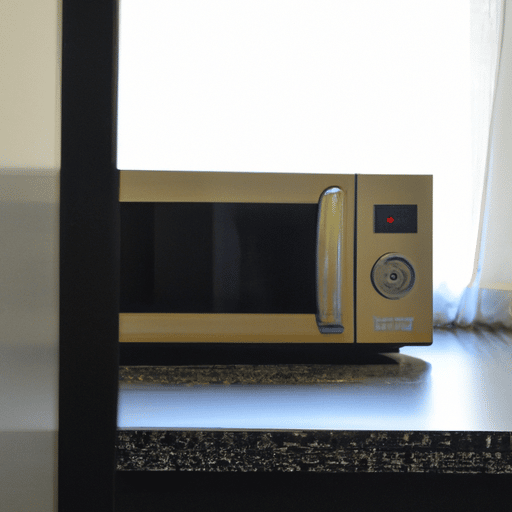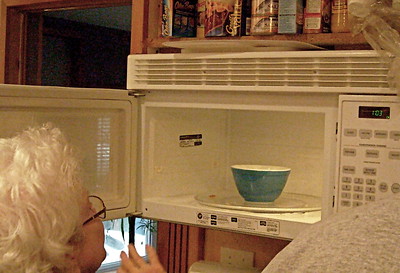Can you imagine a life without a microwave oven? While it is not far-fetched, microwave ovens help in reducing the time and work it takes to warm food or even prepare it. Depending on what you use your microwave for, there is no doubt it saves you the hustle of pots and pans.
Today in most kitchens, you will find a microwave oven listed as one of the top essential appliances. However, very few people understand how a microwave oven works regardless of its popularity. The mysteries hidden behind the metallic boxes have remained just that – mysteries.
But in this piece, not anymore! Here, we will dive into crucial details of how does a microwave work. We will focus on the scientific aspects of the microwave oven; this is centred on how the electrons, molecules, and atoms contribute to a microwave’s proper functioning.
Radiation
When looking into how microwave ovens work, one of the key things to focus on is radiation. So what does radiation have to do with the microwave oven? We have to go back to the word “microwave” to understand this.
A microwave contains electromagnetic radiation that spans a wide spectrum of waves, including short gamma waves and long radio waves. These waves are not visible and are a very small part that is referred to as visible light—heat energy from a conventional microwave form of non-ionising radiation.
In essence, microwave radiation does not have the energy needed to break down electrons into atoms or destroy or damage organic matter. Apart from being used in kitchen appliances, other microwaves have been in telephone and television communication and speed guns. They have also been used to cure and dry resins, plywood, carbon fibre, and other materials.
The Microwave Oven
To understand how microwaves work, we should look at their evolution. The invention of the first microwave oven is credited to Percy Spencer, and like many other scientific discoveries, the first microwave oven was a by-product of the main experiment.
In the mid to late 1950s, Percy Spencer, an electrical engineer, worked on a magnetron Filament at the Raytheon Manufacturing Company. It was during his works that microwaves were used as a heat source.
Microwave ovens use specific electromagnetic radiation for cooking or warming food. When you place your food in the microwave oven and get the microwave oven going, the microwave creates microwave energy from a magnetron device. These microwaves reach your food by being converted to heat that cooks and warms your food.
The energy created can pass through plastic, ceramic, paper, or other materials to create your food container. The food absorbs the energy in the form of microwaves. This happens due to the waves displacing the water molecules in the food and replacing them with heat energy. These waves are not toxic and hence have no dangerous impact on your food.
Cooking Using Microwave Ovens
Now that you know that microwave ovens are named after an electromagnetic spectrum of energy, you are on the right path to answering the age-old question, how does a microwave work to cook food?
When you turn on the microwave oven and close the door, small microwaves are created in a tube found in the microwave oven in a magnetron device. These waves are then reflected in the food compartment of the microwave oven, rapidly heating your food.
While electrical energy moves through the filament and other materials in your microwave oven, your food absorbs the waves. When this happens, the water molecules in the food vibrate, and it is during this process they generate heat by rubbing against one another, causing the temperature to rise. Microwave ovens cook food using this electromagnetic radiation.

Water in your food is essential in allowing you to cook food faster. It has been proven that foods with high water content cook faster than drier foods. This means that fresh foods will cook faster, too.
If you place a whole chicken inside a microwave, some parts are cooked, especially the outer layers, but the inside is not. This is because food is cooked when microwaves cause more and more molecules to vibrate, transferring the heat to the innermost parts of the food.
You can directly compare the heat from microwave ovens to rapid conventional heat. The only difference is microwave heat has a heightened pressure. Heating only happens when the electromagnetic fields in the magnetron align and polarise. They do this by rotating and rubbing against each other.
When using a microwave oven, remember always to cover your food. Do this to ensure that all the heat in the food is properly utilised. Cut your food into smaller pieces and spread it out to cook evenly.
This also reduces the cooking time. Remember, frozen foods need to be defrosted so it does not use more energy than you need to when cooking. You can place the food in boiling water or use the defrost setting on the microwave.
Parts of a Microwave Oven
Here is a breakdown of the operational parts of a microwave oven.
Power Source
The power source is a high-voltage power converter or a basic transformer. This allows heat to pass to and from the magnetron.
Capacitor Connector
This part of the microwave plays the role of a tuning element. It is also the power step up for the magnetron.
Magnetron
This is the unit that is used to generate microwaves. It is also known as a microwave generator.
Metallic Cooking Chamber
The metallic cooking chamber or oven cavity is what houses all the waves produced by the magnetron. This part ensures that the waves are contained inside the oven walls. This protects both you and the microwave from exposure.
The Control Panel
This is the visible part of the microwave oven. This is where you operate the microwave, setting the time and selecting the cooking mode. It is also the part that gives you a signal once the food is done cooking.
Is a Microwave Efficient in Cooking?

Microwave ovens have made their way into our homes as basic and standard appliances. Some uses of microwaves are for heating and cooking food. Many people have been quoted saying that microwaves can prove more convenient and efficient than a conventional oven depending on what you are cooking.
This is because microwave ovens use heat centred on your food only, unlike conventional ovens or stoves. However, it would help if you remembered that the taste of food cooked in a microwave might be slightly different from that cooked in an oven.
In some instances, microwave ovens have retained most minerals and vitamins in foods instead of conventional ovens or stoves. How a microwave cooks, your food comes down to the food you are cooking.
For instance, if you leave food with high water molecules in the microwave, you risk overcooking it. On the flip side, if you leave dry food for a long time in the microwave, you risk burning it. Hence, the time required for microwave cooking depends on the kind of dish it’s made of.
You have to take a different approach to foods that incorporate dry and wet components. This means you have to cook the food at different times to cater to the two components. A good example of this is pie. When cooking a pie, you have the crust and the filling; the crust might be warm in the microwave, but the filling is boiling.
What Foods Are Microwaves Safe?
Many foods today are microwave safe. However, you should always read the safety instructions for packaged food before putting it into the microwave. Also, a microwave can be inefficient depending on the food you are cooking; you might need a conventional cooking method.
This is because the heat from a microwave can only penetrate an inch or two deep into the food. So if you are cooking dense food in the microwave, chances are the inside will be raw. Some foods that you can buy at the grocery come with timer instructions. To make sure the food is cooked all through, you can leave it standing for a few minutes before eating.
Safety when using the microwave is something that we all need to remember. One safety tip is always to use microwaveable Tupperware containers or plates. The ideal materials to go into a microwave are glass, ceramic, plastic, or paper. These materials allow the waves from the magnetron to pass through into the food. It then transfers the heat to your food.
Thin plastic containers can melt if they are exposed to high heat from the microwave. It would be best not to use aluminium foils, metallic pans and plates, or metal containers in a microwave. This is because the microwave energy bounces from the surfaces of these materials back to the magnetron, which causes damage.
How Safe Are Microwaves
A typical microwave oven is safe and secure if used properly. However, there have been concerns about how microwaves can cause illnesses over the years. This is because electromagnetic waves and radiation have been directly linked to cancer-related health issues.
Today, you can rest easy knowing that your domestic ovens pose no danger to your health as far as waves go. If you remember right, we talked about the waves from kitchen microwaves being non-ionising. This means that they cannot damage or destroy organic matter or body tissue.
Microwave oven and oven manufacturers today focus on building modern microwave ovens that are safe. Most microwaves, if not all, come with a standard feature known as an interlock. This feature protects you when using the microwave. These restrict the leaking of waves from the microwave when used.
The disposal of domestic microwave ovens that are not in use for one reason or another should be done properly. This means any part of the microwave responsible for the radiation is properly disposed of. It includes the filaments and the magnetron.
If your microwave leaks waves, there is very little chance of being dangerous. This is because the leaked waves will be in the form of long radio waves, similar to those used in mobile phones and wireless computer networks.
The Possibilities Are Endless When Using a Microwave
Looking into the uses of a microwave can take you down the rabbit hole. To save you this trouble, we chose to go down said rabbit hole for you and summarise the information. Microwave ovens have moved from a luxury to a basic need in some cases.
However, chefs from all around the world advise against using a microwave when preparing food, especially meats. But if you are in a pinch and looking for a fast solution, you can always turn to your microwave to cook food. The possibilities of what a typical microwave oven can do are unlimited. We hope this piece has answered your question about how does a microwave work.

